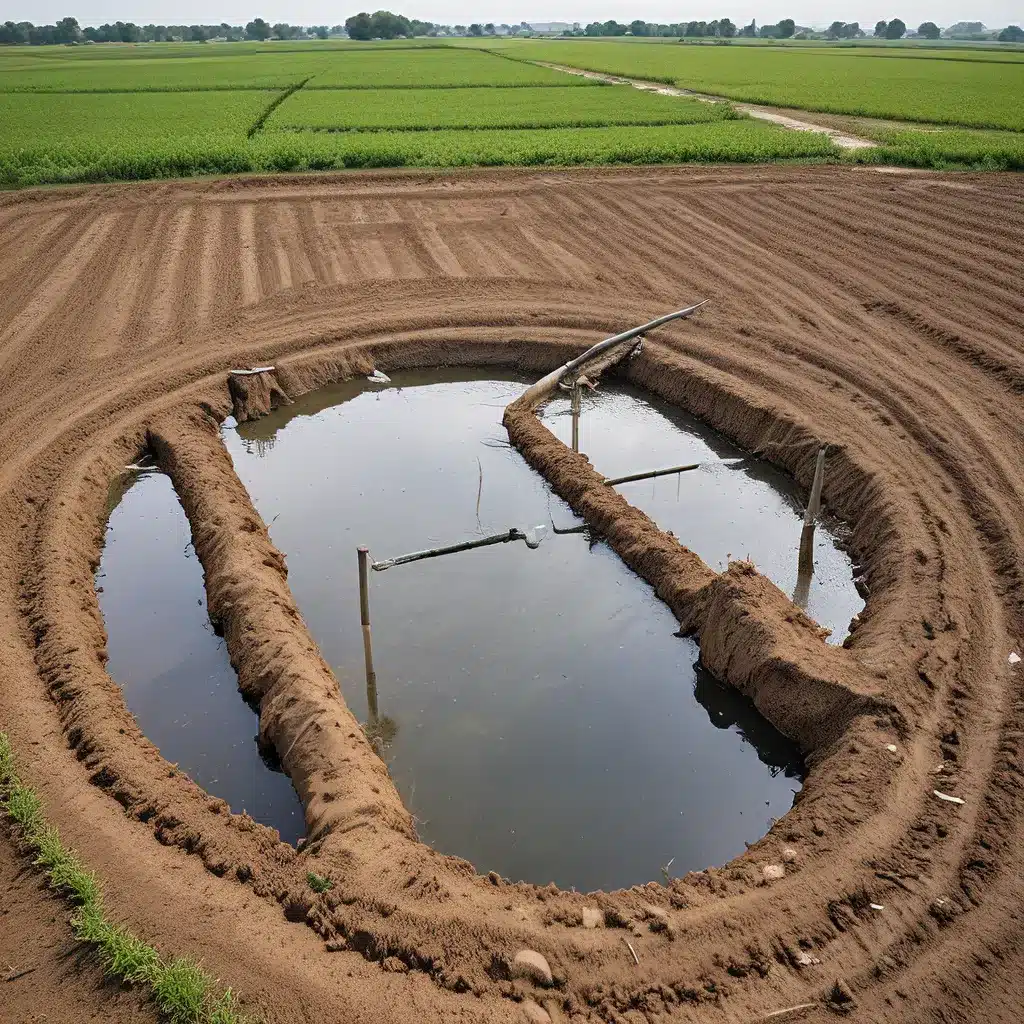
The Circular Water Journey: Transforming Waste into Wealth
Picture this: a bustling farm where every drop of water is treated with the utmost care and respect. Gone are the days of simply drawing from the nearest river or well and letting the excess runoff disappear. No, this is a farm that has embraced the power of the circular economy, where wastewater is seen as a valuable resource, not just waste.
It all started when I stumbled upon a fascinating article that opened my eyes to the incredible potential of wastewater recycling in agriculture. As the article explained, irrigation accounts for a staggering 70% of global freshwater withdrawals, making it the single largest consumer of this precious resource. And with a growing population, changing dietary patterns, and the looming threat of climate change, the importance of water recycling and reuse in agriculture is only going to increase.
Closing the Loop: Wastewater Recycling in Action
So, what does this circular water economy look like in practice? Well, let me take you on a tour of a farm that’s leading the way.
Capturing the Runoff
One of the primary sources of recyclable water on this farm is the irrigation runoff. Instead of letting that water simply flow away, the farmers have installed a series of strategically placed canals and collection ponds. These capture the excess water, which is then pumped into a state-of-the-art treatment system.
According to experts, this simple yet effective approach can greatly reduce a farm’s water demand, conserving precious freshwater resources and minimizing the environmental impact of wastewater discharge.
Livestock Waste Meets Treatment
But that’s not all. This farm also generates a significant amount of livestock wastewater, which can be a valuable source of nutrients for crops. However, before it can be reused, it needs to be treated to remove any contaminants. The farmers have invested in a range of treatment methods, from simple filtration systems to constructed wetlands, all designed to ensure the water is safe for irrigation.
Tapping into Municipal Wastewater
And the circular water journey doesn’t stop there. The farm has also forged a partnership with the local municipality, tapping into their treated wastewater as an additional source. As the experts at Netafim explain, using recycled municipal wastewater not only provides a reliable water supply for the farm but also reduces the environmental impact of discharging treated wastewater into nearby water bodies.
Balancing Risks and Rewards
Of course, the use of recycled water in agriculture isn’t without its challenges. One of the primary concerns is the potential risk of contaminants, such as heavy metals or pathogens, entering the food chain. That’s why this farm takes a meticulous approach to water quality monitoring and adheres to the strictest safety guidelines.
“It’s all about finding that delicate balance,” explains the farm’s sustainability manager. “We know the immense benefits of wastewater recycling, but we also take the risks extremely seriously. That’s why we’ve invested in robust treatment methods and work closely with regulatory authorities to ensure the safety of our crops and our community.”
Beyond Irrigation: Innovative Water Reuse Strategies
But the circular water journey on this farm doesn’t stop at irrigation. The farmers have also embraced innovative water reuse strategies, such as managed aquifer recharge and the cultivation of aquaponic systems.
Replenishing Groundwater Reserves
Managed aquifer recharge, a process where treated wastewater is used to recharge depleted groundwater aquifers, is a game-changer. Not only does it provide a storage option for surplus recycled water, but it also helps combat the declining groundwater levels that plague many agricultural regions.
Aquaponics: A Closed-Loop Wonder
And then there’s aquaponics, a fascinating system that combines fish farming and hydroponics. In this setup, the nutrient-rich water from the fish tanks is used to grow crops, which in turn filter and clean the water, creating a truly closed-loop system. It’s a brilliant example of how wastewater can be transformed into a valuable resource, reducing the farm’s dependence on freshwater sources and minimizing waste.
Overcoming Obstacles: The Collaborative Approach
Transitioning to a circular water economy in agriculture is no easy feat, and this farm has faced its fair share of challenges. But with a collaborative spirit and a commitment to sustainability, they’ve managed to overcome the obstacles.
The key, they say, lies in the support of government agencies, research institutions, and the wider community. Through smart policies, financial incentives, and public-private partnerships, the farm has been able to access the resources and expertise needed to make their circular water vision a reality.
Charting the Path to a Sustainable Future
As I left the farm, I couldn’t help but feel a sense of awe and inspiration. This place is a shining example of what’s possible when we embrace the power of the circular economy and the transformative potential of wastewater recycling.
And the best part? This is just the beginning. As more farms and communities follow suit, the ripple effects will be felt far and wide. Freshwater resources will be conserved, environmental impacts will be reduced, and a truly sustainable future for both food and water systems will start to take shape.
So, if you’re wondering what the future of agriculture looks like, look no further than this farm – a living, breathing testament to the power of closing the loop and turning waste into wealth. After all, as the experts at Inland Waters Inc. would say, “When it comes to water, every drop counts.”


